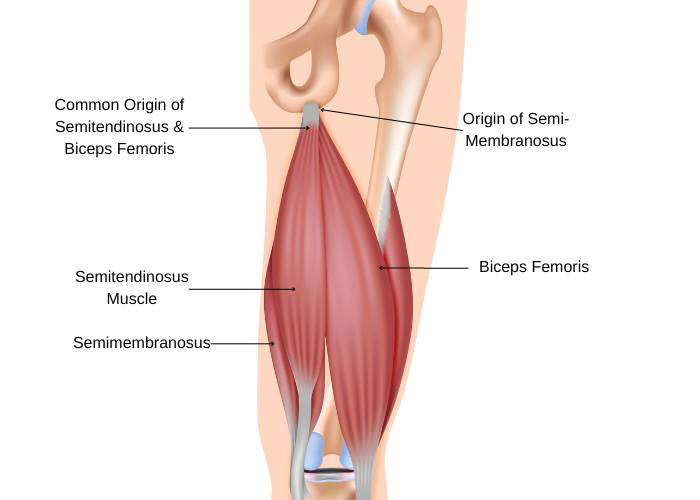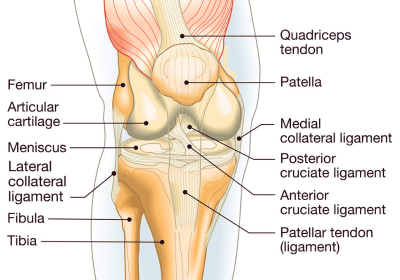Proximal Hamstring Repair Surgeon
If you participate in sports or activities that require a lot of running, sudden stops and sudden starts or jumping, you may be at risk of tearing your proximal hamstring. The hamstrings are necessary for hip and knee stability and strength. If you have torn your hamstring, you should be seen by an orthopedic surgeon. Proximal hamstring repair surgeon, Doctor Prem N. Ramkumar, has the experience and expertise in surgical repair of proximal hamstring tendon tears. He is located in Long Beach and serves patients in Los Angeles, Orange County, and surrounding Southern California areas. Contact Dr. Ramkumar’s office today.

What is a hamstring injury?
The hamstrings are a group of four muscles along the posterior (back) of your thigh: the long and short heads of the biceps femoris, semitendinosus, and semimembranosus. The long head of the biceps femoris tendon and the semitendinosus tendon originate as one unit and are referred to as the conjoint tendon; the semimembranosus originates laterally to this; and the short head of the biceps femoris originates distally and is typically unaffected.
The job of the hamstrings is to bend the knee and to straighten the hip. The hamstrings are frequently used in many physical and sports-related activities. A muscle strain or tendon tear can occur when one or more of the hamstring muscles becomes overloaded either gradually or suddenly.

Athletes and non-athletes can be susceptible to a hamstring injury. Athletes who are especially involved in sports with a great deal of running, jumping, or sudden starting and stopping are most commonly afflicted (soccer, track & field, football). A hamstring injury can also occur from repetitive use of the hamstrings in physical activities. The hamstring tendons are attached to bony prominences on the bottom of the pelvis known as the ischial tuberosities. These tendons can become inflamed with frequent hamstring use and result in hamstring tendinopathy. The outer segment of the tendon can thicken and easily tear with continued inflammation. Common complaints of a hamstring injury include pain deep in the buttocks, swelling, severe bruising, and pain that worsens with activities of daily living.
What is the treatment for a hamstring injury?
Hamstring injuries are categorized into three classifications according to the severity of the injury.
- Grade 1 tear: A hamstring “pull, strain or sprain,” the muscle and tendon are still in their correct anatomical position, but may have been stretched beyond their normal capacity. Grade 1 injuries are accompanied by muscle tightness in the back of the leg but most patients are able to walk normally. Mild swelling and muscle spasms may be present.
- Grade 2 tear: A moderate strain or sprain with a greater number of injured muscle fibers. Grade 2 strains will affect a patient’s walking pattern, often show bruising and is tender to palpation.
- Grade 3 tear: A complete tear to one or more of the hamstring muscles. Walking is often difficult and bruising and swelling begins right away. Grade 3 tears often benefit from surgery to repair the torn muscle(s) and/or tendon(s).
Grade 1 and 2 tears are characterized as mild to moderate muscle strains that may affect weight-bearing ability. Most hamstring injuries fall in these two categories and are often able to be treated with conservative therapies alone. A combination of RICE (rest, ice, compression, elevation), immobilization, and non-steroidal anti-inflammatory medications (NSAIDs) are encouraged for pain and inflammation management. Participation in a physical rehabilitation program, when appropriate, is also recommended.
However surgical intervention may be necessary in the event of a complete tear of all three of the hamstrings originating from the ischial tuberosity, two of the hamstring tendons with retraction at least 2cm, or failure of conservative therapy. When developing an appropriate treatment plan, several factors, such as the patient’s age, medical history, activity level, and severity of injury, are taken into consideration. Dr. Prem N. Ramkumar, orthopedic hip doctor, is located in Long Beach and serves patients in Los Angeles, Orange County, and surrounding Southern California areas who have experienced a hamstring injury and are in need of surgical repair.
How is an open hamstring repair performed?
An open surgical technique is the standard of care for repairing hamstring injuries. It is commonly used for patients with recurrent injuries or damage to more than one tendon. A cosmetic incision is created to visualize the entire muscle group while completing the necessary repairs with anchors.
On occasion, tendon retraction can cause substantial muscle atrophy. This is often the case when a significant amount of time passes between the injury and surgical repair. Open reconstruction of the tendon involves a tendon graft from either the patient (autograft) or donor tissue (allograft) to lengthen the tendon or entirely reconstruct the tendon.
What is the recovery period like after hamstring repair?
The recovery period following a hamstring repair requires as much meticulous postoperative care by the patient as the surgery itself. Most patients can anticipate normal walking by 3 months but a full recovery by 6 to 9 months. In general, patients can expect the following recovery timeline:
- Restricted toe-touch weight-bearing with crutches or a walker in a brace locked in 30° of flexion at all times for the first 6 weeks. No physical therapy during this time is allowed.
- After the first 6 weeks, the brace will be removed and weight bearing can be progressed with assistive device weaning. At this time, formal outpatient physical therapy will be initiated with an emphasis on gait training to normalize walking, but no active hamstring contraction or knee flexion will be allowed during this time.
- After 12 weeks, emphasis will shift towards range of motion and strengthening. This process can take an additional 3-6 months to start returning to full activities without precautions.


